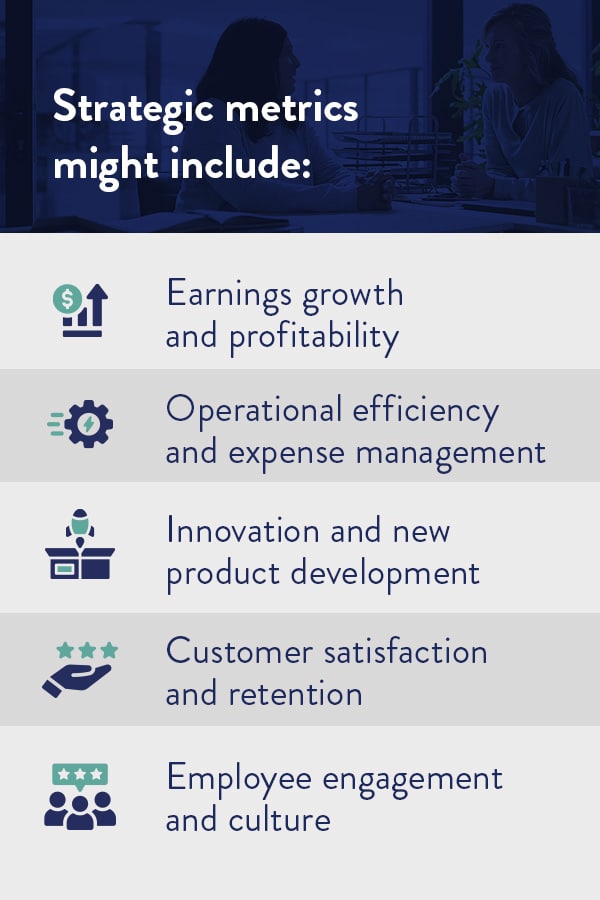Compensation
Executive Compensation

According to the Bureau of Labor Statistics, the median total pay for top executives in the USA was $206,680 in 2023. With an increasingly complex, globalized business landscape, companies compete to secure the leading consultants and executive minds. Understanding and structuring effective executive compensation packages is critical for businesses looking to stay competitive and innovative.
This article explores the essential aspects of executive compensation for consultants, senior management and other executives and provides best practices for HR executives to optimize compensation programs.
What Is Executive Compensation?
Executive compensation refers to the financial rewards and benefits provided to senior management in exchange for their work for an organization. Unlike general employee compensation, executive pay packages often focus more on incentives and rewards for reaching specific company goals and increasing shareholder value.
The fundamental objectives of executive compensation plans are to:
- Attract and retain highly skilled and experienced executive talent
- Motivate executives to achieve and exceed company performance targets
- Align executives’ interests with the long-term interests of shareholders
- Promote accountability and appropriate risk-taking in decision-making
- Comply with governance and regulatory standards
Standard employee compensation packages typically consist of salary and essential benefits. In contrast, executive compensation plans are multifaceted packages designed to drive long-term organizational success and reflect the unique responsibilities and strategic impact of executive roles.
Executives today must navigate complex global markets, manage diverse stakeholder expectations and drive innovation while ensuring sustainable growth. Their compensation packages must reflect their sophisticated roles, incorporating elements that address immediate performance needs and long-term strategic objectives.
Importance of Executive Compensation
A well-designed executive compensation program provides numerous benefits, including:
- Strategic alignment and performance: Sufficient executive compensation plans are crucial for aligning leadership actions with organizational objectives. When properly structured, these plans motivate executives to make decisions that benefit short-term performance and long-term sustainability. This alignment is achieved through thoughtful performance metrics, vesting schedules and balanced incentive structures that encourage thoughtful risk-taking while preventing excessive short-term focus.
- Talent attraction and retention: Competitive executive compensation packages that consider current market rates, future trends and potential career growth opportunities help companies attract and retain top leaders. Organizations work with experienced executive compensation consultants to develop attractive packages in a dynamic market.
- Cultural impact: Executive compensation can influence organizational culture, setting the tone for company pay philosophy. Well-designed compensation structures can reinforce desired behaviors, promote innovation, encourage collaboration and demonstrate commitment to principles like pay equity and performance-based rewards.
- Market competitiveness: Effective executive compensation helps organizations maintain their competitive position in the market. It enables companies to attract innovative leaders to drive innovation and industry transformation. The proper compensation structure can also help organizations adapt quickly to changing market conditions and emerging opportunities.
- Stakeholder confidence: Transparent and well-structured executive compensation programs build stakeholder confidence by demonstrating sound governance practices. They show that the organization values performance, accountability and responsible resource management.
Components of Executive Compensation
A typical executive compensation plan includes the following fundamental elements:
Base Salary
Base salary is the fixed portion of executive pay, typically 20%-30% of total compensation, paid out in regular increments throughout the year. It is usually the smallest component of an executive’s total direct compensation and provides a stable income stream not directly tied to performance factors.
The base salary is an essential yardstick for assessing the competitiveness of an executive pay package, but it is not the only consideration. When setting executive base salaries, organizations typically consider factors such as:
- The executive’s role, responsibilities and experience
- The size, industry and complexity of the organization
- Competitive benchmarking against peer companies
- Internal pay equity with other executives and the broader employee population
Getting base salaries right promotes fairness and ensures the executive pay program is externally competitive.
Short-Term Incentives (STIs)
STIs, or annual bonuses, are variable pay opportunities tied to achieving particular performance goals within 12 months. Standard structural elements of an STI plan include:
- Target award opportunity, set as a percentage of the base salary, for example, 100%
- Performance measures, usually focused on key financial metrics such as revenue, profitability or cash flow
- Threshold, target and maximum performance levels for each metric, with corresponding payout opportunities, for example, 50% for threshold performance, 100% for target performance and 150% for maximum performance
- An individual performance piece that can adjust the formulaic payout up or down based on factors such as leadership, strategic impact and collaboration
The mix of financial and individual measures in an STI plan will vary based on the company’s strategic priorities and the executive’s role. For example, a CEO’s bonus might focus heavily on corporate financial performance, while a functional leader’s plan might emphasize division-specific operational metrics.
When designing STI plans, organizations should strive for simplicity, clarity and a tight link between executive actions and performance outcomes. Well-designed STI plans motivate executives to achieve challenging annual goals and contribute to their total annual compensation.
Long-Term Incentives (LTIs)
LTIs are variable pay instruments that reward executives for achieving long-term strategic objectives and creating shareholder value over a multi-year period, typically three years or more. The most common forms of LTIs are:
- Stock options: Executives may have the right to purchase company shares at a predetermined exercise price over a specified period, typically 10 years. Options provide value to executives only if the company’s stock price increases.
- Restricted stock units (RSUs): The company may promise to deliver a specified number of shares — or the cash equivalent — at the end of a vesting period. RSUs provide value to executives even if the stock price does not increase, promoting retention.
- Performance shares or units: These are grants of shares or units that vest based on achieving specific performance criteria over a multi-year period. Performance shares align executive rewards with essential long-term strategic and value-creation goals.
LTIs are the largest and most potent component of most senior executive compensation packages. They directly link executive wealth and shareholder returns, promoting a strong ownership mentality. When designing LTI plans, organizations must consider factors such as:
- The right mix of LTI vehicles based on strategic priorities, industry norms and executive preferences
- Appropriate performance metrics and goals that align with long-term value creation
- Vesting schedules that encourage executive retention and provide strong governance
- Grant sizes that create meaningful upside opportunity and wealth leverage within reasonable levels
Effective LTI plan design is complex, requiring collaboration among HR, finance and legal teams and input from executive compensation consultants.
Benefits and Perks
Executive pay packages often include various benefits and perks that complement the total rewards portfolio. Common executive benefits include:
- Comprehensive health care coverage, life and disability insurance, and retirement plans
- Supplemental executive retirement plans (SERPs) that provide additional retirement benefits beyond those available to other employees
- Deferred compensation plans that allow executives to postpone the receipt of current income into the future, often with the company matching contributions
Executive perks are noncash rewards such as company cars, car allowances, personal use of corporate aircraft, executive physical examinations, financial planning services, club memberships and event tickets.
While benefits and perks represent a small portion of the total executive compensation package, they are crucial in attracting and retaining exceptional talent. They also provide tax-advantaged reward opportunities. However, organizations must be reasonable in using perks to avoid negative optics and ensure responsible stewardship of corporate assets.
Severance Packages and Change-in-Control Agreements
Severance and change-in-control (CIC) provisions offer critical protection for executives who lose their jobs due to individual termination or corporate restructuring. Common features include:
- Severance pay based on a multiple base salary and target bonus, like two times the base plus bonus
- Accelerated vesting of outstanding equity awards
- Continuation of health benefits and perks for a defined period
- Outplacement services to support job transition
For senior executives, CIC protections often include enhanced severance benefits and full vesting of equity to ensure continuity of leadership and objectivity during a potential corporate transition.
When designing severance and CIC protections, organizations must balance providing executives with security and avoiding excessive payouts that can spark shareholder concerns. Working with outside legal counsel ensures provisions are consistent with governance best practices.
Designing an Effective Executive Compensation Strategy
A well-crafted executive compensation plan requires systematic development and thoughtful integration of multiple components. Success demands careful attention to strategic alignment, market dynamics and stakeholder interests while maintaining strong governance and implementation practices.
Aligning Compensation With Company Goals
Successful executive compensation plans require careful alignment with organizational objectives. When designing an executive pay program, consider short-term performance needs and sustainable long-term value creation.
Define the company’s short-term and long-term goals, such as increasing market share, driving innovation, improvising operational efficiency or enhancing customer satisfaction. Determine the behaviors, actions and results your executive team needs to achieve those goals, which will help you identify key performance metrics to include in your plan.
Strategic metrics might include:

- Earnings growth and profitability
- Operational efficiency and expense management
- Innovation and new product development
- Customer satisfaction and retention
- Employee engagement and culture
Market Research and Benchmarking
Benchmarking executive pay against a carefully selected group of peer organizations ensures your program’s competitiveness in the talent market. You should regularly assess peer practices, industry trends and emerging strategies.
Market research should cover base salary levels, incentive opportunities, equity practices and benefit provisions. Consider organization size, industry sector, geographic location and business complexity. Executive compensation consultants usually support this process, gathering and analyzing market data to ensure programs remain competitive while managing costs.
Performance Metrics and Evaluation
Selecting the right performance metrics and setting appropriate goals is critical to driving the desired behaviors and results from your executive team. Performance metrics should reflect strategic priorities, operational goals and stakeholder interests. When choosing metrics, consider the following best practices:
- Focus on three to five key metrics that are most critical to your business strategy
- Balance financial and nonfinancial metrics to provide a holistic performance view
- Ensure metrics are specific, measurable and directly tied to value creation
- Select metrics that are within executives’ ability to influence and control
Governance and Compliance
Executive compensation is subject to complex legal, regulatory and governance requirements. Understand and adhere to all relevant Securities and Exchange Commission (SEC) disclosure rules, including those related to the Compensation Discussion and Analysis (CD&A) section of the proxy statement.
Ensure your incentive plans are exempt from or compliant with Internal Revenue Code (IRC) Section 162(m) and other tax regulations. Follow best practices for equity plan design and administration, including shareholder approval of share reserves and appropriate vesting and holding periods.
Establish a clear and robust process for setting executive pay, including a well-defined role for the compensation committee and an independent compensation consultation. Additionally, you should monitor and respond to the policies and guidelines of major shareholders.
Program Implementation
Successful implementation requires comprehensive planning across multiple dimensions:
- Communication: Develop compelling communication materials to help your executives understand how the program works, what they need to do to earn a payout and how their compensation aligns with shareholder interests. Use written and verbal communication channels.
- Legal documentation: For legal and regulatory compliance, maintain accurate and comprehensive documentation of your compensation plans, including plan documents, award agreements and meeting minutes.
- Administrative processes: Establish transparent processes and responsibilities for administering the program, including goal setting, performance tracking and payout calculations. Ensure all relevant stakeholders are aligned and equipped to support the program.
- Ongoing evaluation: Regularly assess the effectiveness of your executive compensation program in driving the desired behaviors and results. Solicit participant feedback, analyze pay-for-performance alignment and monitor market practices and trends.
Challenges in Executive Compensation
Even the most well-designed executive compensation programs face challenges. Common issues to navigate include:
Balancing Fairness and Competitiveness
Maintaining a balance between internal equity and external competitiveness is a primary challenge in executive compensation plans. Organizations must offer competitive packages to attract and retain top talent while managing internal pay ratios and workforce perceptions.

Some strategies to strike this balance include using rigorous market data to ensure executive pay aligns with peer practices, monitoring pay ratios between executives and median employees and evaluating the need for special pay arrangements.
Managing Stakeholder Expectations
The diverse expectations of various stakeholders create significant complexity in compensation design. Shareholders demand strong performance alignment and return on investment, while employees scrutinize executive rewards for fairness.
To manage expectations, proactively engage with investors to solicit input on your pay programs and address concerns. If you must file public filings, such as an annual proxy statement, you should also disclose your compensation plans and rationales there. Establish a track record of strong pay-for-performance alignment and responsible pay practices.
Responding to Economic Volatility
Periods of economic uncertainty and market volatility can wreck even the best-designed executive pay programs. To maintain the integrity of your program in challenging times, consider incorporating relative performance metrics that compare company results to peer or industry benchmarks.
To encourage a long-term focus, you could lengthen performance periods or add hold requirements to equity grants. Additionally, stress-test your incentive plan designs to ensure they remain viable under various economic scenarios.
Handling External Scrutiny
Even when executive compensation packages are technically sound, they can become lightning rods for public criticism if perceived as excessive or disconnected from company performance.
Monitor the external narrative around executive compensation and be prepared to respond to critiques. To avoid negative optics, ensure realized pay outcomes are clearly aligned with shareholder returns and company results. You should also avoid problematic pay practices, such as excessive perks, guaranteed bonuses or outsized severance packages.
Create Strategic Executive Compensation Packages With Exude Human Capital
Designing an effective executive compensation program is essential for attracting, retaining and motivating exceptional leadership talent. Aligning pay with performance, anchoring your program to market best practices and maintaining strong governance and compliance allows you to create a powerful system that drives long-term success.
Exude Human Capital delivers comprehensive HR solutions, including compensation strategy services and implementation support. Our exceptional executive compensation consulting services include market analysis, program design and governance guidance tailored to your organization’s unique needs.
Schedule a consultation today to learn how our expertise can enhance your compensation strategy and drive organizational success.








